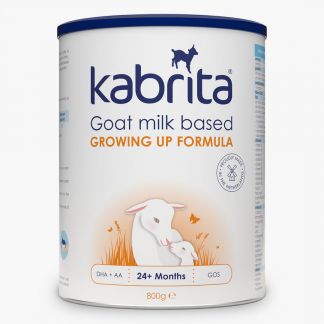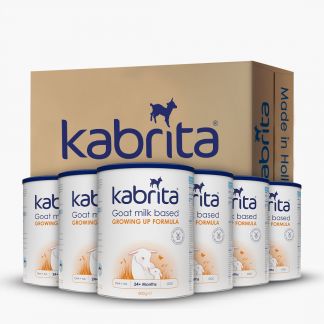Feeding on demand or on schedule?

There are two ways to determine when to feed your baby: you can feed on demand or feed based on a feeding schedule for your baby. We explain the difference for you and also discuss the advantages and disadvantages of both options.
Feed on demand
Feeding on demand means that you give food when your baby signals that he/she is hungry. At that point, you breast or bottle. You also give food until your baby indicates that it has had enough. It is therefore important to keep a close eye on the signals of your child. This way you can feed on time, before the hunger gets too bad and your baby starts crying.
The following signs can indicate that your baby is starting to get hungry:
- Make sucking movements with the lips;
- sucking on the fingers;
- Search with the mouth and turning the head and/or body;
- The mouth opens.
The moment the hunger gets worse, your baby will become more restless, start stretching and move the hand to the mouth. If your baby starts crying or gets a red head, the hunger has already increased. Because a crying baby won’t want to drink right away, it’s best to try to calm your baby first. But even better is of course to prevent this, so learn to recognize your baby’s signals if you want to feed on demand. After a few weeks or months there will be more and more a rhythm.
Feeding on demand is recommended if you are breastfeeding. This is better for milk production, it will adapt to the needs of your baby. Milk production remains high and feeding on demand creates less engorgement, because your breasts are drained more often.
Bottle feeding on demand is a little more difficult than breastfeeding on demand, because you still have to make the bottle first. With bottle feeding on request, you give smaller amounts of food at a time. The amount per day remains the same, but this can be divided over more feedings, if your child needs it. The bottle does not have to be empty either, your child will indicate when he or she has had enough.
Feeding on a feeding schedule
Feeding on a schedule means that you determine when you feed based on a feeding schedule for your baby. You feed your baby at regular intervals. This is sometimes chosen because it can be easier and because your child gets more regularity. Breastfeeding on schedule is less common, but sometimes this is chosen. At set times, the child may drink for about 15 minutes and 2, 3 or 4 hours later than the next feeding. The disadvantage of this is that the milk production can decrease. To ensure that milk production is properly stimulated, it is better to breastfeed on demand.
When has your child had enough?
Just as your child indicates that he or she is hungry, your child will also give signals when he or she is full and has had enough. Your baby will turn its head away and often your child will fall asleep contentedly. Make sure that your baby does not fall asleep while feeding. If this does happen, wake your baby gently to prevent that he or she does not get enough milk.
It can be concluded that feeding on demand is best for your little one. By feeding when your child wants and giving how much he or she wants, your child will never get too little. You also prevent your baby from getting too hungry. Are you still concerned whether your child is drinking enough? Please contact the consultation office.

